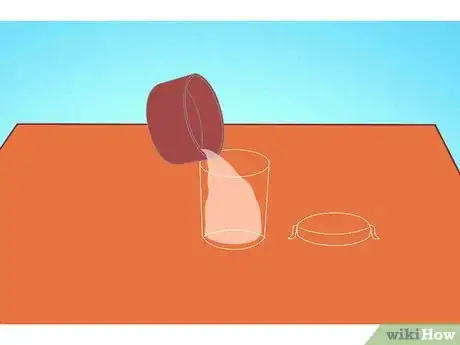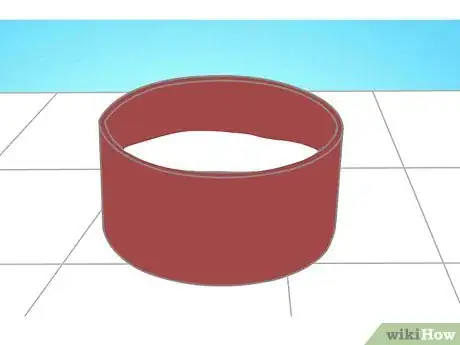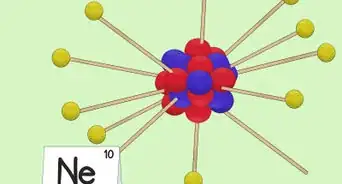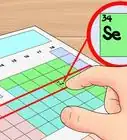wikiHow is a “wiki,” similar to Wikipedia, which means that many of our articles are co-written by multiple authors. To create this article, 16 people, some anonymous, worked to edit and improve it over time.
This article has been viewed 245,265 times.
Learn more...
Citric acid is a weak acid found naturally in citrus fruits like lemons and oranges. Its sour and tangy flavor, along with its neutralizing properties and preservative qualities, make it a popular ingredient in a range of products including food items, beverages, pharmaceuticals, cosmetics, and cleaning agents.[1] Although citric acid is commonly available in solid form, as crystalline powder, you may have applications for which a liquid form is preferable.[2]
Steps
Preparing the Solution
-
1Buy citric acid in crystalline powder form. You can find it at many grocery stores, Middle Eastern or kosher markets, cooking stores, health food stores, or bulk food stores. It is sometimes in the canning/preservation section and sometimes labeled "sour salt." Purchase at least 1 lb. (454 g) in order to make an adequate amount of citric acid solution.
-
2Buy (or make) distilled water.[3] Distilled water has had many of its minerals and impurities removed through a process of boiling and condensation.Advertisement
-
3Select non-metallic or non-reactive metal items (see list below) for the process. Citric acid reacts with several metals, which is why it can be used as a metal cleaner. (This also explains why orange juice placed in an unlined metal canteen quickly takes on an unpleasant metallic taste.)
- Make sure they are thoroughly cleaned before use to avoid possible contamination of the solution and fungal growth.
-
4Determine the amounts of citric acid powder and water that you require to create the solution. Solutions with higher and lower concentrations of citric acid have differences in regards to potency, shelf life, and cost.
- A higher concentration of citric acid solution will store better than a lower concentration solution. A good measure is 1 lb. (454 g) of citric acid powder to 1 pint (470 ml) of water.
- However, a lower concentration solution of 1 lb. (454 g) of citric acid to 2 pints of water (940 ml) also works, is more economical, and results in the convenient ratio of one fluid ounce (30 ml) of the solution being equivalent to one-half ounce (14 g) of the dry powder.[4]
-
5Measure the powder. Place 1 lb. (454 g) of citric acid powder in a non-metallic pot. Set the pot aside.
-
6Boil the water. Bring your choice of 1 or 2 pints (470/940 ml) of water to a boil in a non-metallic pot.
- Utilizing a microwave-safe container is an option, but always be careful when boiling water in a microwave. It can superheat and then rapidly boil over when disturbed. Check the water frequently and when removing, wear an oven mitt and carefully give the container a nudge to make sure it does not want to boil over. Also place a wooden chopstick or similar item in the water before heating (it will attract the bubbles so they don't all form at once).[5]
- Utilizing a microwave-safe container is an option, but always be careful when boiling water in a microwave. It can superheat and then rapidly boil over when disturbed. Check the water frequently and when removing, wear an oven mitt and carefully give the container a nudge to make sure it does not want to boil over. Also place a wooden chopstick or similar item in the water before heating (it will attract the bubbles so they don't all form at once).[5]
-
7Pour the boiling water over the powder, stirring constantly with a non-metallic spoon until all the powder is dissolved. Please be careful with the boiling water! Using a non-reactive tea kettle might be an option.
Storing the Solution
-
1Filter the solution. Using filter paper or cheesecloth, strain the solution through into another non-metallic pot or bowl to remove any solids that haven't dissolved.
-
2Allow the solution to cool to room temperature. This makes the transfer to your storage container safer, and will prevent a tightly-sealed plastic storage bottle from crushing (imploding, really) as a hot liquid cools inside it.
-
3Transfer the solution. Pour the solution into an air-tight, non-metallic container. Make sure it is thoroughly clean (boiling glass or heavy-duty plastic containers for 5-10 minutes is an option). Choose a container with a tight-fitting lid. Use a funnel to pour the solution into the container(s).
-
4Store the solution in a cool, dark place, such as a cupboard or closet. When stored properly, the solution can last for up to two years.
Community Q&A
-
QuestionWhat are the chemical properties of citric acid?
 Community AnswerIt can exist either in an anhydrous (water-free) form or as a monohydrate. Citric acid is normally considered to be a tribasic acid. The pH of a 1mm solution of citric acid will be about 3.2.
Community AnswerIt can exist either in an anhydrous (water-free) form or as a monohydrate. Citric acid is normally considered to be a tribasic acid. The pH of a 1mm solution of citric acid will be about 3.2. -
QuestionWhat is the procedure of turning solid citric acid to liquid?
 Community AnswerTo produce a citric acid solution, simply solve the solid substance in distilled water. Use the following formula to determine how much substance to use for a desired concentration and volume: m=c*M*V; meaning: mass (weight of solid citric acid)=concentration (amount of molecules per volume)*molar mass (mass of a given number of molecules)*volume of the finished solution.
Community AnswerTo produce a citric acid solution, simply solve the solid substance in distilled water. Use the following formula to determine how much substance to use for a desired concentration and volume: m=c*M*V; meaning: mass (weight of solid citric acid)=concentration (amount of molecules per volume)*molar mass (mass of a given number of molecules)*volume of the finished solution. -
QuestionCan citric acid powder be added to black tea or water?
 Community AnswerYes, but it's very sour. You might want to add a pinch of sugar or a few slices of cucumber to balance the sour.
Community AnswerYes, but it's very sour. You might want to add a pinch of sugar or a few slices of cucumber to balance the sour.
Warnings
- Citric acid solution can develop a fungus if not properly treated and stored. Make sure you use non-metallic, clean processing equipment. Store or bottle your solution tightly to avoid fungal growth.⧼thumbs_response⧽
- Do not expose the solution to temperature extremes or sunlight, which may compromise the acidity levels of the solution.⧼thumbs_response⧽
- While citric acid is a food product with pharmaceutical uses, this recipe for citric acid solution is recommended for cleaning purposes only. Dilute it further with water (if required) to make a cleaning solution that suits your needs, according to available recipes. Do not ingest citric acid powder or solution unless under the advice of a medical professional. Keep out of reach of children and pets.⧼thumbs_response⧽
Things You'll Need
- Citric acid powder
- Distilled water
- Filter paper or cheesecloth
- Non-metallic pots
- Non-metallic, large spoon
- Air-tight, non metal container
References
- ↑ http://foodreference.about.com/od/Food-Additives/a/What-Is-Citric-Acid.htm
- ↑ https://www.drugs.com/inactive/citric-acid-anhydrous-397.html
- ↑ https://sciencenotes.org/how-to-make-distilled-water/
- ↑ https://sciencing.com/citric-acid-powder-uses-6574856.html
- ↑ https://sciencing.com/science-experiments-formation-crystals-ammonia-14145.html
About This Article
To prepare a citric acid solution, put 1 pound of citric acid crystals in a non-metallic pot to prevent the citric acid from getting a metallic taste, and set the pot aside. Then, bring 1 pint of water to a boil in another non-metallic pot. Pour that boiling water over the citric acid while stirring constantly until all the powder is dissolved. Next, filter the solution through a cheese cloth and let it cool to room temperature before storing it. To learn more about making and storing citric acid so it lasts longer, read on!



























































